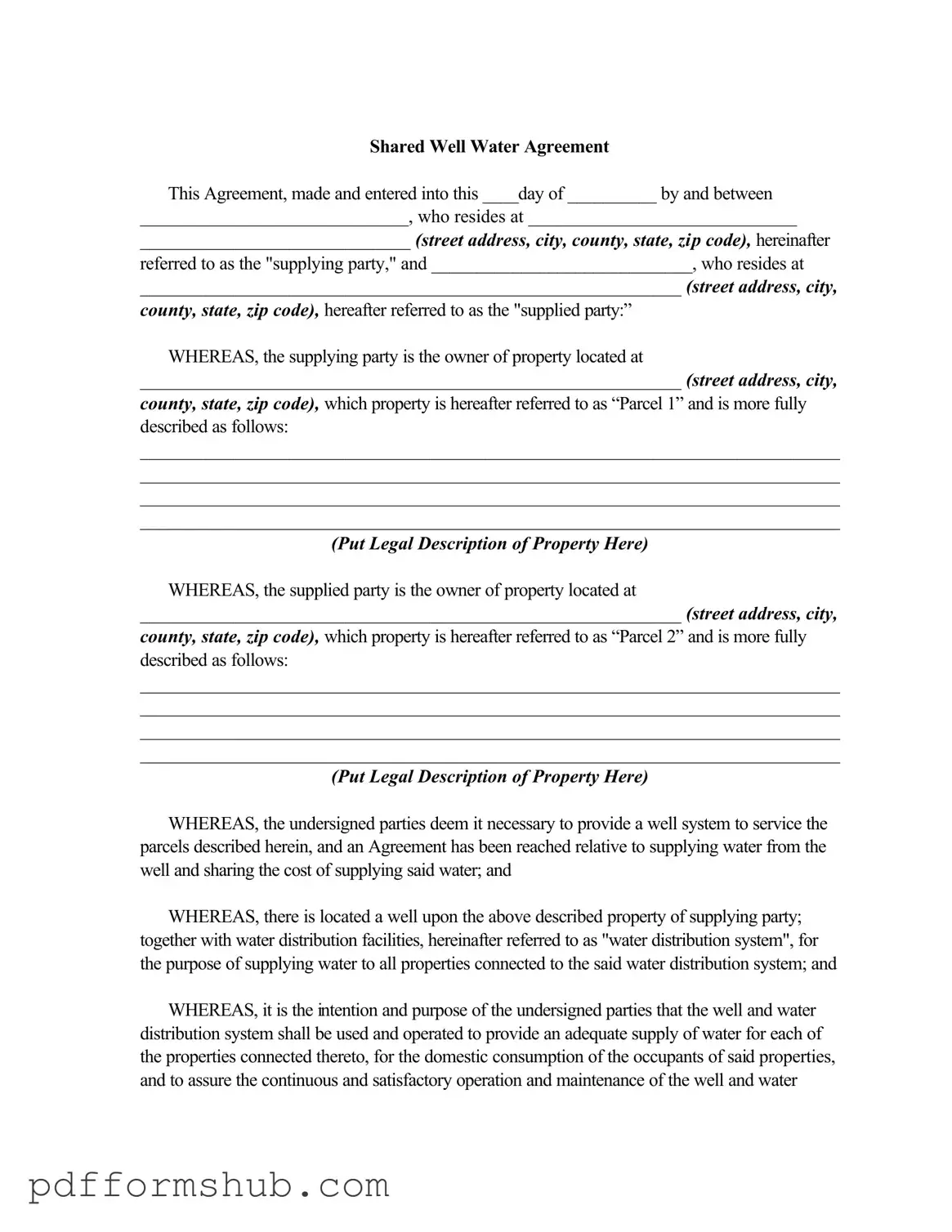Fill in Your Shared Well Agreement Form
The Shared Well Agreement is a legal document that outlines the terms and conditions for sharing a well and its water distribution system between two or more property owners. This agreement ensures that all parties involved have a clear understanding of their rights and responsibilities regarding the use and maintenance of the well. By formalizing these arrangements, the agreement helps prevent disputes and promotes cooperation among neighbors.
If you are ready to establish your Shared Well Agreement, please fill out the form by clicking the button below.
Customize Form
